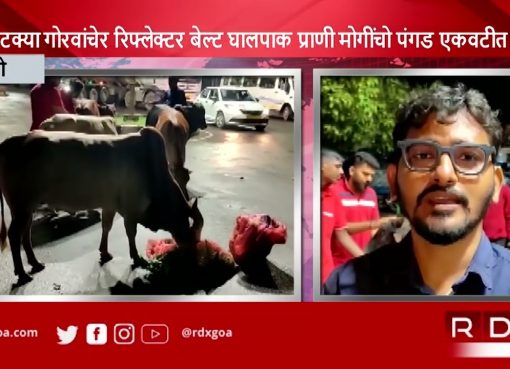
It’s the 1970s, and Goa is pulsating with the rhythm of full-moon parties. The air is electric with trance beats and psychedelic vibes, drawing in a crowd of free-spirited wanderers. This sun-soaked paradise, with its relaxed atmosphere, stunning landscapes, and culturally tolerant ethos, became a haven for the countercultural movement. For the hippies of that era, Goa was more than just a destination – it was a refuge where freedom, self-expression, and unconventional living thrived. Perhaps, it was with their arrival that Goa’s nascent tourism industry got an unintended boost.
In 2014 : Online travel companies like Booking.com focused on Goa as their IDEAL business destination in India after Agra, Rajasthan etc brining foreigners from all parts of the world. Guest Houses in Calangute made Rs 5000/- a night on an average, with guaranteed long stays as the Britishers enjoyed the beaches & the food for over a month. The Russians on the other hand came in charters and attracted domestic Indian clientele to the plate. Calangute & Candolim together gave one of the best hotels & hospitality true to their motherland.
Fast forward to 2025 – has Goa’s magic truly faded, or is this simply a reflection of changing times and evolving expectations?
Rising Costs and Diminished Value
Goa’s increasing accommodation, food, and transportation expenses have made it less appealing to budget-conscious travellers like Russian Charters.
A polished tourist is willing to pay Rs 90,000 a night but are we giving him complete satisfaction especially when he compares us to an International destination?
The Fall of companies like THOMAS COOK
The collapse of Thomas Cook had a significant impact on Goa’s tourism industry. The company had been operating in Goa for over 25 years and was a major source of international tourists, particularly from the UK. On average, Thomas Cook Airlines booked 35,000 seats from the UK to Goa each season through its charters. The closure of Thomas Cook is estimated to have caused a direct loss of around INR 50 crore to the state.
Companies like Makemytrip saw the potential in domestic tourists in 2015. They started as a start up with huge fundings. They started buring cash from their pockets only to make the domestic traveller get used to their apps. It became addictive & habitual & by 2018 they captured the whole domestic market, giving Goa a bullish holiday push.
What Makemytrip realised –
What we really need is family entertainment. That’s the biggest untapped segment of tourism worldwide. Right now, we’re getting students with little money and pensioners living off their savings. That isn’t really contributing?
In the meanwhile, AIRBNB with only 1 representative for Goa & hardly any team thought differently.
They captured untapped inventory – Goan Homes, Apartments – Suddenly turning every piece of land into commercial gains with less operating costs & equally profitable to 2/3 star hotels. What did they expect in return? Excellent guest service & competitive pricing by the host.
This gave rise to quality tourism catering to a golden era in domestic tourism giving all travel agents a run for their money until covid hit.
Constant Complaint between Quality VS Quantity –
Did we every ask the quality what do they prefer & why?
What Opulent Travelers Are Choosing Instead :
• Dubai or Abu Dhabi: Known for tailored ultra-luxury experiences.
• Maldives: Private islands, seaplane transfers, and butler service.
• Bali/Phuket: Established luxury villas, fine dining, wellness retreats.
What Goa Could Do
• Attract investment for exclusive villa developments, private marinas, and gated resort towns.
• Improve last-mile transport, airport facilities, and sanitation in key areas.
• Regulate zoning laws around premium properties to preserve their surroundings.
• Develop curated luxury travel itineraries through partnerships with global operators.
NOT TO FORGET : GOA NEEDS TO BE HIGH ON CLEANLINESS.
Infrastructure and Environmental Concerns
Goa’s infrastructure has not kept pace with its tourism growth. Inconsistent beach upkeep, unreliable public transport, and limited facilities for tourists have become major drawbacks. Additionally, environmental issues such as beach pollution have diminished its charm, leading tourists to seek destinations with better-maintained environments.
Russians & Brits who would once come to Goa have opted for Sri Lanka instead
WE NEED ZONING : LIKE THEY SAY THE RICH & THE MINIBUS TOURISTS DON’T SWIM TOGETHER IN THE SAME POOL.
Tourism in Goa has diversified. Earlier, foreign backpackers dominated the scene. Now, we see a mix of budget domestic tourists and affluent Indian families. Budget tourism—like the so-called ‘minibus tourists’—brings people who often cook their own food or drink on the beaches, contributing less to the economy. On the other hand, affluent tourists spend significantly more and drive up prices, making it harder for locals to enjoy the same spaces. Whether that’s good or bad depends on whom you ask—it’s very subjective.
Rs 99 BIRYANI NEEDS TO STOP IMMEDIATELY
Goa needs to evolve, transform, and how?





